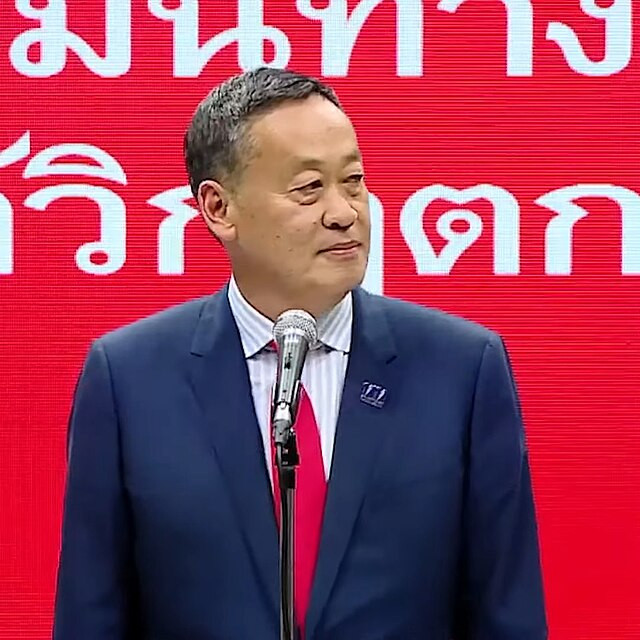During the Asia-Pacific Economic Cooperation (APEC) Leaders' Summit held in San Francisco, USA, Thailand's proposal of an alternative route to the Strait of Malacca, known as the "Land Bridge" project, garnered attention.
The project aims to connect two deep-sea ports on either side of Thailand's narrowest point, the Kra Isthmus, with a 100-kilometer route featuring a six-lane highway and a double-track railway. The ports, located in Ranong Province on the west and Chumphon Province on the east, will have cargo terminals and oil depots, with oil being piped between the two ports before being shipped globally. The project, estimated to cost 1 trillion Thai Baht (about 28 billion US dollars), is expected to complete its first phase by 2030 and the entire project by 2039.
The Strait of Malacca, situated between Malaysia and Singapore, is one of the world's busiest maritime routes, handling about 40% of global trade. Currently, all container ships traveling between Asia and Europe must pass through this strait, the shortest sea route connecting the Asia-Pacific region with India and the Middle East.
Thai Prime Minister Prayut Chan-o-cha, during the summit, highlighted the potential issues of the Strait of Malacca, such as shipping accidents, piracy, adverse weather conditions, increased transportation costs, and shipping delays. He emphasized that congestion in the strait could severely impact the global economy.
Prayut, in a special presentation at the APEC summit, promoted the Land Bridge project to potential investors as a "cheaper, faster, and safer route." He claimed that compared to the Strait of Malacca route, the Land Bridge could reduce travel time by an average of four days and cut shipping costs by 15%.
Thailand has promised foreign investors more than 50% ownership in joint ventures with local companies for the construction of ports and related infrastructure.
Prayut stated that investors in logistics, real estate, banking, and primary manufacturing would benefit from this large-scale project. American companies, including SSA Marine, the Port of Long Beach, Oracle Corporation, and Webtec, have shown interest.
The idea is not new and has been considered by several Thai governments over the past decades. The Thaksin government proposed a canal across the Kra Isthmus in the early 21st century, attracting investment interest from several East Asian countries, including China. The Prayut government studied a land-based connection across the isthmus. However, these plans were repeatedly shelved due to potential environmental impacts and domestic political factors.
Prayut's government's Land Bridge plan essentially inherits the concept from the previous government but is more open to Western capital. Since becoming Prime Minister in August, Prayut has focused on economic agendas and actively attracted foreign investment to boost Thailand's economy.
The APEC meeting was not Prayut's first attempt to attract investment for the Land Bridge project. He also promoted it at the Belt and Road International Cooperation Forum in Beijing in late October. Prayut welcomed Chinese investors to help develop Thailand and promised to improve the ease of doing business in the country. Chinese and Saudi investors reportedly showed interest in the project, and Prayut's promotion at the APEC meeting drew even greater attention.
Analysts believe that the Land Bridge project could become a geopolitical hotspot as countries vie for regional influence. However, Prayut seems to be avoiding potential tensions by opening the project to global investors.
Mark S. Cogan, Associate Professor of Peace and Conflict Studies at Kansai Gaidai University in Japan, believes that it is crucial for Prayut to fully utilize the APEC opportunity and that promoting the Land Bridge to the West could restore Thailand's delicate balance in its relations with major powers.
Meanwhile, Prayut appears more concerned with the project's domestic significance, stating that it is expected to create 280,000 jobs and increase Thailand's GDP by 5.5% annually.
However, the feasibility of the Land Bridge project has sparked controversy.
Antonio L Rappa, Associate Professor at the Singapore University of Social Sciences' School of Business, views the project as "too costly" and warns of the unstable separatist movement in southern Thailand and the mountainous terrain of the project area, which could affect construction. However, if successfully developed, it could significantly impact Singapore only after at least 50 years.
Yuttaporn Issarachai, a political scientist at Sukhothai Thammathirat Open University in Thailand, noted that the canal project during the Thaksin government was hindered by domestic politics and concerns over environmental and internal security impacts. Although the Land Bridge project does not involve a canal, it faces many challenges, including geopolitical conflicts.
He also pointed out that nearby maritime territorial disputes involving China, Vietnam, and the Philippines could drag Thailand into the South China Sea dispute if a new maritime route is constructed in the disputed area.
However, Mohd Hazmi Mohd Rusli from the International Islamic University Malaysia's Faculty of Islamic and Law believes that the Land Bridge project might proceed if China, as a major stakeholder, firmly invests in it. He considers the Land Bridge project more feasible than a canal project, as it does not require digging through the Kra Isthmus.
The Land Bridge project, if realized, represents a significant shift in regional maritime logistics, potentially offering a viable alternative to the heavily trafficked Strait of Malacca. Its success, however, hinges on various factors, including geopolitical dynamics, environmental concerns, and the economic viability of the project. As nations in the region and beyond show increasing interest, the Land Bridge could become a pivotal element in shaping the future of Southeast Asian trade and transportation.






